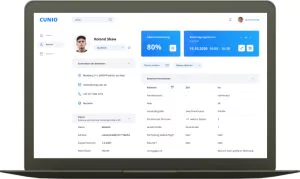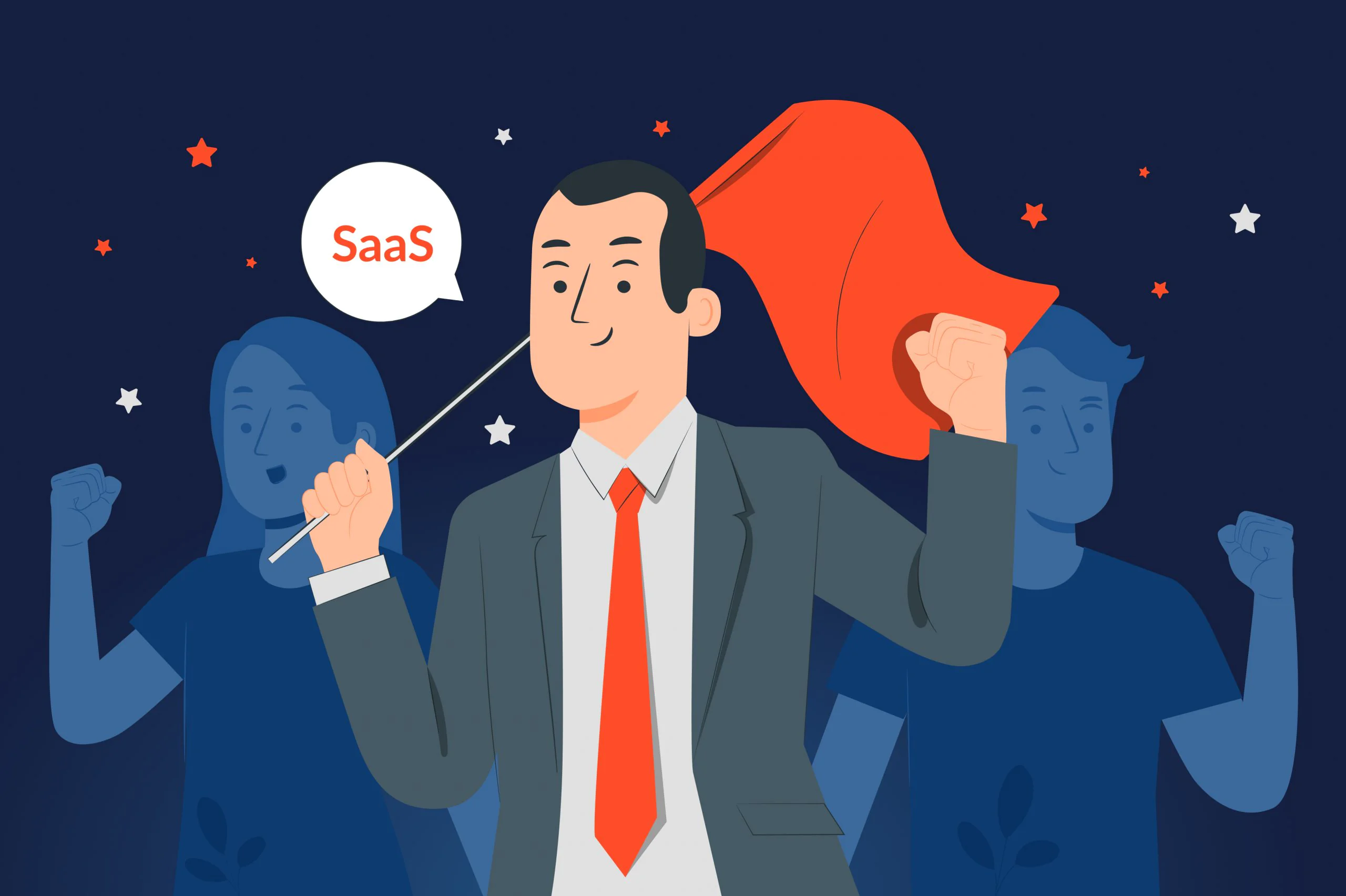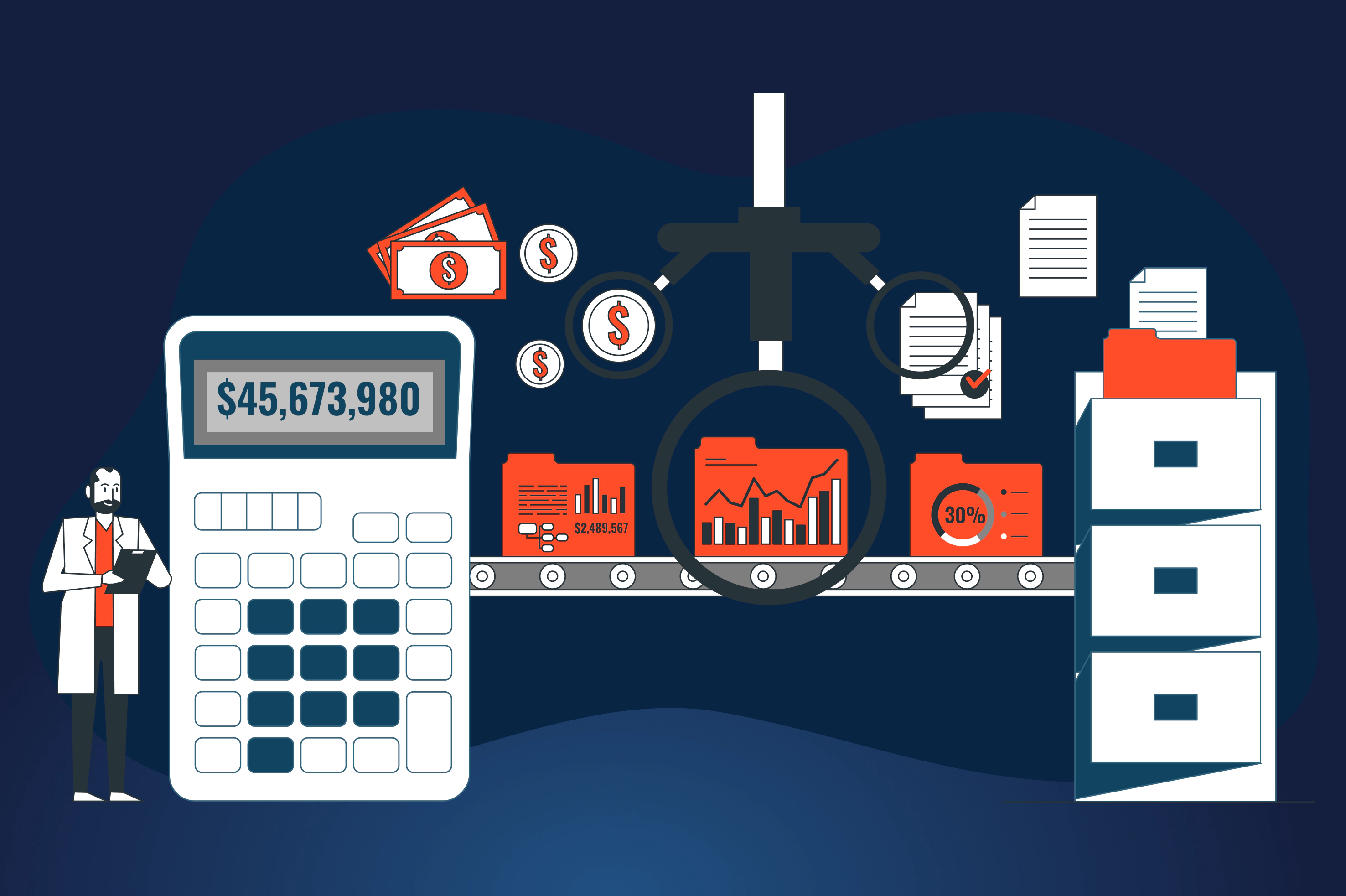Company after company have started to exploit software as a service (SaaS) model, inspired by the success of others. If in the past SaaS solutions sounded more like “book of the month” clubs, today it’s one of red-hot trends in the tech world.
In fact, the first SaaS-based company, Salesforce, was founded in 1999. Since that time, the SaaS sector has evolved, amassing $152 billion in 2021. Not to jinx it, but SaaS market is predicted to be worth an earth-shattering $208 billion in 2023.
Global SaaS market
SaaS solutions have definitely created a lot of buzz lately, and there are lots of business opportunities in this industry. But the big question is “What’s the cost?” Not to create suspense, we have an answer right away: between $20K and $200K. How did we find out? As a software development company, we at JatApp know a thing or two about the SaaS development cost and how to keep it to a minimum. When you’re curious to learn more, keep reading.
But before we dive in, let’s define what SaaS is and what it’s not.
What’s a SaaS solution?
SaaS refers to the model of delivering mobile or web solutions over the Internet. Users are charged a service fee, once they’re subscribed to a licensed software hosted on the cloud. For you to better grasp the concept, let’s compare the SaaS model with traditional software.
Under the SaaS model, users don’t buy any cloud-based software. It’s neither installed on the hardware nor offered physically. Customers receive only access to an application, once they’ve paid a subscription fee. This allows SaaS companies to have recurring revenues and engage with customers for longer periods of time. A new version of an app isn’t necessarily a new purchase, and users usually don’t pay a thing to synchronize with a mobile app.
Our client from Germany, a company that offers a payroll application for employees is a perfect example of a SaaS solution. Corporate clients access this app over the Internet to enable their employees to view information about wages and financial records. When they don’t want to receive this kind of service, they can simply press the unsubscribe button.
The payroll app functionality
The traditional software model is a different story, though. Vendors provide a copy of their solution, so that users can install it on their hardware. Notably, users need to pay a one-time fee to use the software. A new version of the software is always a new purchase, and mobile synchronization is often rather costly.
Well, we all remember games, like Freddi Fish or The Sims, from our childhood. These are examples of traditional software, which you had to install via compact discs in order to play. Ah, the good old days, when we had to hunt for popular games and got over excited with new purchases. And it’s no wonder that we were so obsessed with these discs. What else could we possibly do with a personal computer not connected to the Internet?
Freddi Fish game
Should you hire in-house developers, freelancers, or a software company?
The first thing you need to do is to think about how you want to hire your software engineers, as your final SaaS development cost would heavily depend on this decision. Let’s take a peek at some benefits and drawbacks of each hiring approach.
In-house developers
Having an in-house team is a smart move for long-term projects. Sadly, this option is not always affordable to many businesses. The following scenario is a viable solution only if you already have a successful company and can cover all expenses that come with hiring and maintaining in-house employees.
Recruiting and onboarding new staff members can be rather time-consuming, and each day of unfilled positions can cost you a great deal of money. On the flip side, you’ll be able to fully control the project from start to finish. And certainly, the risk of intellectual property violations is minimized, because all project secret data stays inside your company.
Building a fully-working SaaS application often requires a big team, especially during the early stages of development. However, when the application is launched, chances are you won’t need droves of people to work on your project. Therefore, you may end up letting go of your team members you put so much effort recruiting.
Freelancers
Freelance developers are remote independent contractors. But don’t confuse freelancers with in-house employees who are working remotely. The former aren’t usually committed solely to your project, while the latter are your full-time team members devoted to your business.
Freelancers can have profound expertise in certain tech stack and be equipped with necessary skills to resolve problems in the software development process. However, it’s not 100% guaranteed that you’ll get high quality software at the end of the day, since, again, there’s no such commitment to your company as with in-house developers. Therefore, choosing freelancers can be a good option, if you have small projects or need to make minor upgrades.
Software company
A software development company epitomizes a happy middle between paying handsomely for in-house developers and taking risks when cooperating with freelancers. Software agencies can cope with projects of all sizes, ranging from SaaS application development from scratch to support services. They ensure full provision from payroll and accounting to hardware and office. The hiring process has never been easier with vetted software companies. The only thing you need to bother is actually the team members’ daily work.
The benefits of working with JatApp
Startups usually love working with software agencies, as they allow them to easily scale up and down, when necessary. With JatApp, you can hire coders after a year of cooperation, if you don’t want to say good-bye to them. It’s really convenient, as you don’t need to spend much time and effort searching for new employees and receive a highly functioning team that is already familiar with your SaaS and industry as a whole.
Software agencies are motivated to provide high quality solutions, as they usually focus on long-term work with their clients. At JatApp, for instance, the average time of cooperation with a client is three years.
SaaS team members’ time and rate breakdown
A SaaS software engineer in Ukraine charges approximately $55 per hour. However, this rate may go up or down, depending on the developers’ experience. The situation is different, however, in the United States, where you’ll need to pay an overwhelming $100-150/hour for the same kind of service. The hourly rates differ that much because the cost of living in Eastern Europe, say, in Ukraine, is way lower than in the US, which allows you to save a lot of money when outsourcing development to these countries.
Here’s a breakdown of JatApp’s engineers’ rates and an average time needed to build a SaaS product:
Let’s calculate the cost of building the final product. If the team is working under the time and material model, a back-end developer’s work would cost $30,800, while a front-end software engineer would charge $12,000 at the end of the project. Meanwhile, the final bill for the QA engineer’s service would be $3,600. In such a way, the total cost to build a SaaS product of medium complexity can reach $46,400 on average.
Don’t forget to consider other costs of building a SaaS product
“Umm…” is the last thing venture capitalists want to hear when they ask how much revenue your SaaS startup will be generating six months from now or, say, a year from now. To get in the game, you need to mind all your expenses throughout the entire product journey. When starting your own SaaS company, you may overlook the running costs associated with APIs, servers, and new functionalities.
Application programming interfaces (APIs)
Some SaaS startups rely on third-party integrations or also referred to as APIs to increase the functionality of the product. For example, one of our clients, Cunio, a SaaS-based company that offers a property management platform, has multiple APIs: Twilio for SMS notifications, SendGrid for email notifications, and Firebase for mobile push notifications. These services, however, come with the cost, so you need to plan these expenses in your budget.
Cunio app functionality
Servers
The initial cost won’t be scary at all, as you won’t have a large user base. Yet, you should expect the costs to climb, once the use of your SaaS product increases. After you launch your product, your monthly server costs will be something between $30 and $50. However, if your solution is file management software, for instance, where you’re charged for file storage, this will most likely mean higher costs.
New functionalities
Your customers expect product improvements and regular updates – this is no secret. Otherwise, they would soon get tired of the never-changing functionality and be discouraged to pay for another month of your service, especially if your competitors have something new to offer.
The truth is, acquiring new clients is always more costly than maintaining the existing ones. Building a roadmap of features can help you understand which directions to pursue in the future and what additional expenses are ahead. In the ideal case scenario, you’ll generate enough revenue to cover the cost to develop new functionalities.
A secret sauce how to minimize your spending
The rule of thumb is the longer it takes to build your product, the higher the SaaS development cost is. If you minimize the number of features you need to have to launch the product, the quicker you’ll be able to develop it and the less money you’ll spend.
In other words, we highly recommend you to build a minimum viable product (MVP) first. An MVP refers to a version of the software that has core functionality, so that early customers could provide feedback and therefore save developers from further unnecessary work. An example of a famous SaaS-based company that started with MVP is Dropbox. As they cut down the development time, they started generating revenue, which was later used to add more exciting and innovative features to the product.
Dropbox MVP
Let’s wind it up
There are many factors that influence the cost of developing a SaaS platform, like your hiring approach, developers’ place of residence, the number of APIs, you name it! JatApp has been specializing in SaaS development for the last several years. We have cooperated with many startups from all over the world and managed to cut down their SaaS product development costs by up to 60% compared to the Western European and American markets. Want to build a SaaS solution but make no sacrifice on the quality? Contact us and let our common journey begin.











